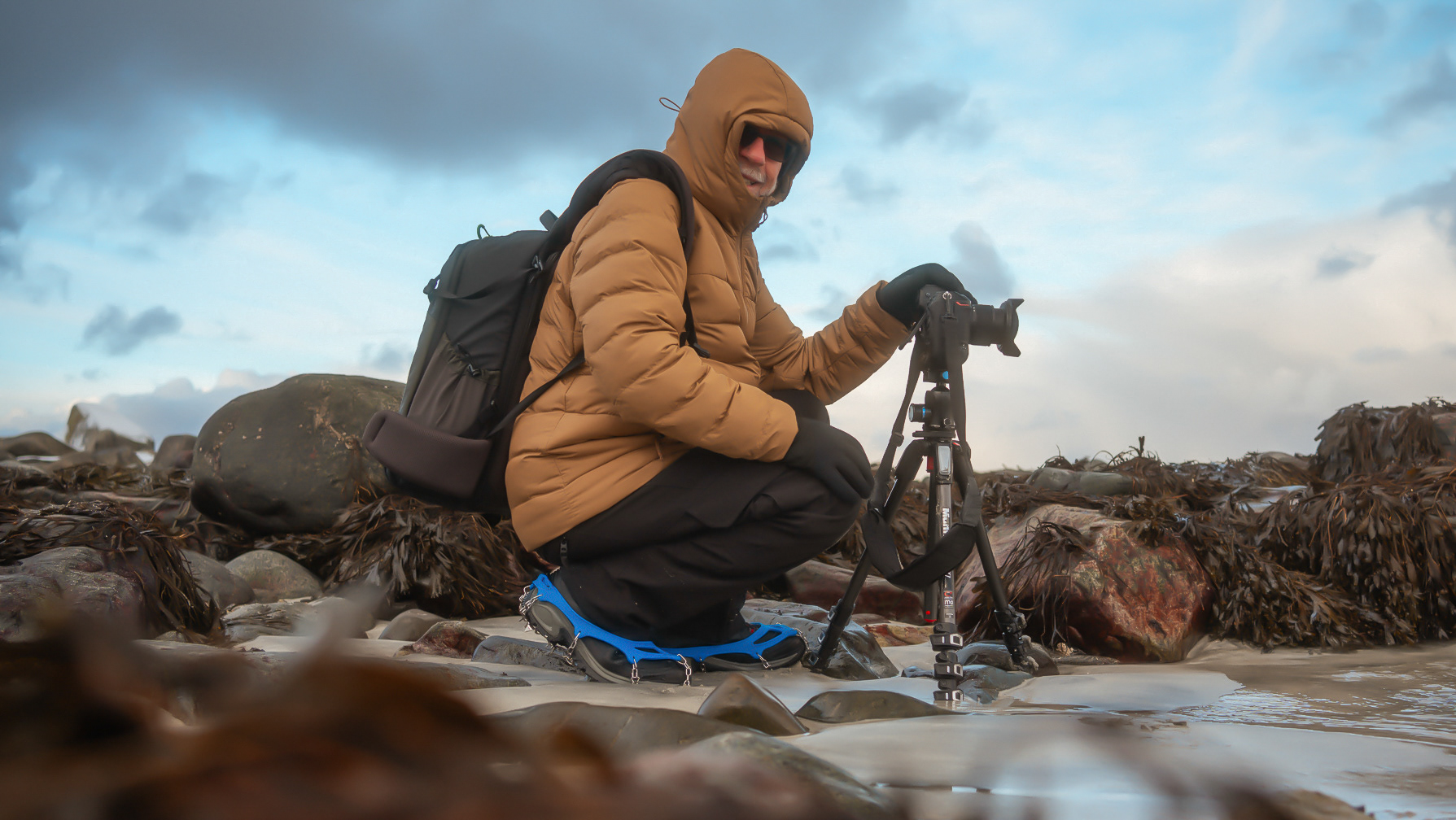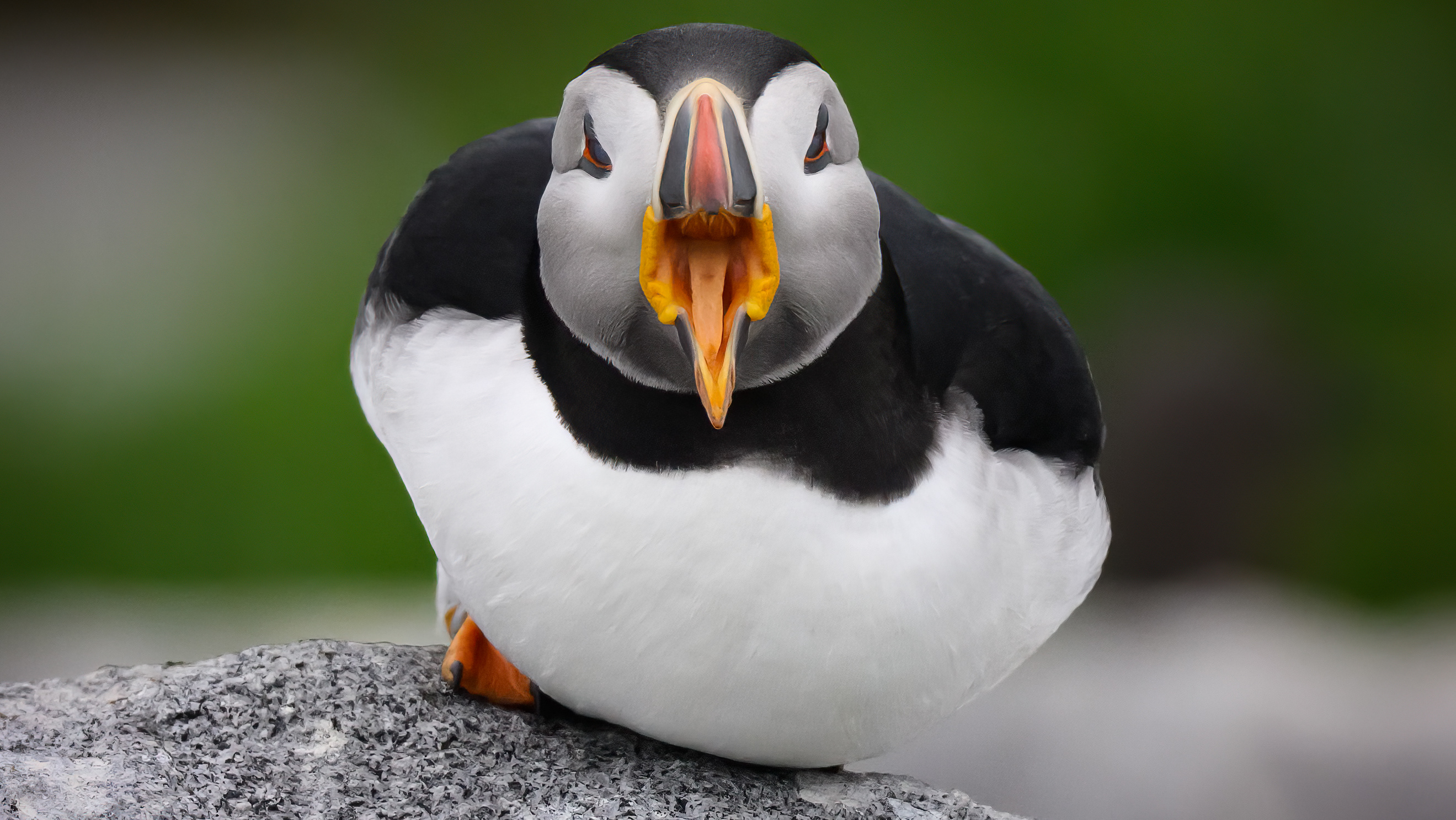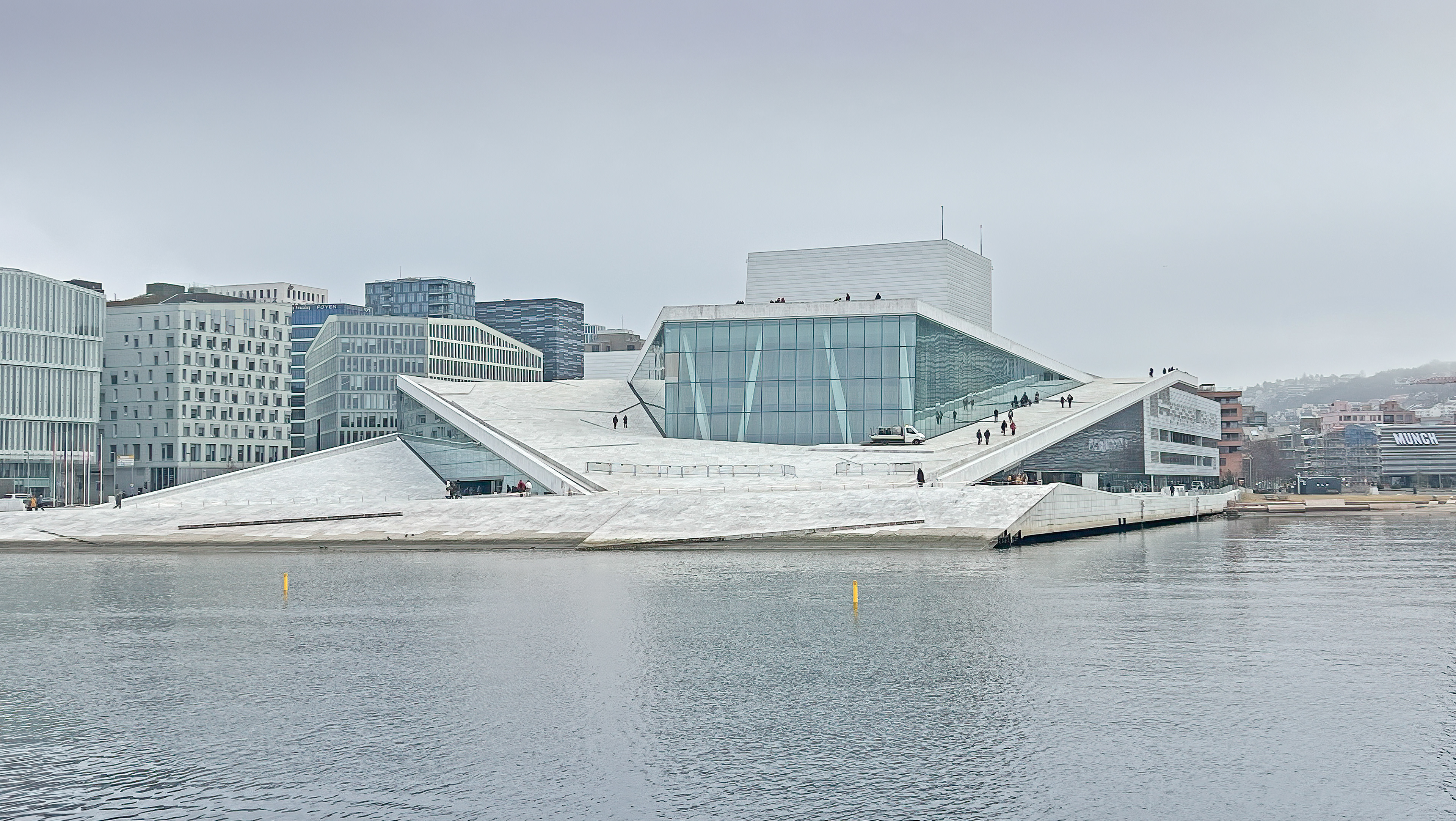February 2025 - The Lofoten Islands are a stunning northern Norway archipelago above the Arctic Circle. This area is characterized by towering mountains, rugged beaches, charming fishing villages, and rapidly changing weather.
During my travels, I often look for photography workshops in the areas I plan to visit. These workshops offer local expertise and guide me to the best locations for capturing the beauty of the landscape through a photographer's lens. I joined "Capture the Atlas," a photography working group that provided transportation from the airport, lodging, and transportation to our various shooting locations. They also offered classes and hands-on instruction in Photoshop and Lightroom. I'm always eager to learn new tips and different approaches to using these two complex programs from others' experiences.
The staff at Capture the Atlas provided helpful instructions, general trip information, clothing recommendations, camera gear suggestions, and detailed trip checklists. Although I ended up overpacking, I didn't forget anything important. I also kept my essential gear in my carry-on luggage in case my checked bag was lost. Back-up plans are crucial for a smooth trip with minimal disruptions. One thing you can always count on is cost overruns, so it's wise to budget extra for unexpected expenses. I also put all my flights, hotel bookings, and car rentals in Tripit so my wife knows the plans. She also had the Find Tom setting on her iPhone, which she's used quite a few times ;-)
I made my reservation in December 2024 to fly out of Dulles International Airport with KLM (Royal Dutch Airlines). Unfortunately, they canceled my flight just over 24 hours before my departure and rebooked me on Icelandair to Reykjavik, Iceland. I was very unhappy with this change. The accommodations on Icelandair on this old jet were uncomfortable, very full and it felt like I was crammed into a cattle car. I couldn't even keep the upgraded seat I paid for.
The connecting flight to Oslo on Icelandair was an improvement, as I was on a newer jet. From Oslo, I took a Norwegian Air flight to Bodø, a hub for traveling to other towns in the Lofoten Islands. My final leg of the journey was on a propeller plane, and it was a bit challenging to maneuver on the ice and snow to board and exit the aircraft. I was excited to touch down finally; despite all the hardships, the journey was worth it!
I stayed at the Scandic Hotel in Leknes the first night before meeting my workshop group. It was the ideal place to unwind with a cold beer and savor fiskesuppe, a creamy fish soup packed with generous chunks of cod and salmon, before getting some much-needed rest.
___________________________________________
Leknes
We met our Capture the Atlas workshop group at the Scandic Hotel. We traveled the short distance to our Lofoten Basecamp cabins, which were comfortable and well-stocked with fantastic views of the fjord and surrounding mountains. We were able to see the northern lights on our first night there!

So happy to finally arrive and start my journey.

Our Lofoten Base Camp cabins.

The interior of our cabin. Not a fisherman's camp :-)

Northern Lights from the rear deck of our cabin. Photo courtesy of my cabin mate Jared Forman

From our cabin, we looked across the fjord at the beautiful reflections of Leknes and the surrounding mountains. It was a cold, calm evening with the hope of seeing the northern lights. There is never a guarantee of seeing them, though my app showed a strong possibility. Our bus driver Gunnar said they usually arrive between 9 pm and midnight.
___________________________________________
Haukland Beach
Our first stop was Haukland Beach, just a 10-minute drive from Leknes, Norway. It features beautiful sandy shores that are ideal for capturing the receding waves as they flow back toward the surf. The view is stunning in winter, with plenty of snow and snow-capped mountain peaks.
Getting to the beach was relatively easy. I followed a well-trodden path through the snow. Once I arrived at the beach, I had plenty of options for where to set up my shot. I found the perfect spot and used a long exposure to capture the wave swash, which is the effect of a wave washing up onto the shoreline and then retreating into the sea. I was glad I wore warm, waterproof snow pants and boots; they were perfect for kneeling in the sand and water and keeping me nice and dry while I took this low-angle shot.
___________________________________________
Flakstadøya
We woke up early and left at 7 a.m. to search for sunrise. Unfortunately, the sun was not cooperative and mostly hid behind the clouds. However, I discovered a beautiful early morning reflection because the low tide had created many pools. I had to wear my ice cleats to navigate to this spot, preventing me from slipping on the ice and rocks.
___________________________________________
Further down the beach, I discovered this eerie spot with cracking and heaving ice. It occurs as the water recedes and the rocks shift in the mud. It gave a distinctly Arctic feel on this cold, snowy day.
___________________________________________
A small village is nestled among majestic mountains that rise from the sea. This scenery offers a perspective on how minuscule the hamlet is compared to the towering peaks.
___________________________________________
Reine
Reine is a small fishing village famous for its scenic location by the Arctic Ocean and majestic Lofoten peaks. This tiny and picturesque little town nestled along the Reinefjorden was our home for the next three days as we explored this part of the Lofoten archipelago.
Upon our arrival, we were met with strong winds and rain. When the winds blow from the southwest, they bring warmer weather and gale-force gusts. This lasted for three days.
Despite the storms, I was still amazed by how spectacular it was here!
___________________________________________

Looking towards the Hamnøy bridge in Reine, Norway, with the fish drying racks in the foreground. These are traditional racks used for drying cod in the classic manner, without the addition of salt. This method works because the air temperature is cool enough to prevent spoilage of the fish. Depending on the size of the individual fish, the average drying time is about 16 weeks. After drying, the cod is soaked in water to restore its original texture and is then used as stockfish in many dishes. I tried the dried fish chips but didn't like them because they were just too dry. The stockfish on the other hand was delicious.
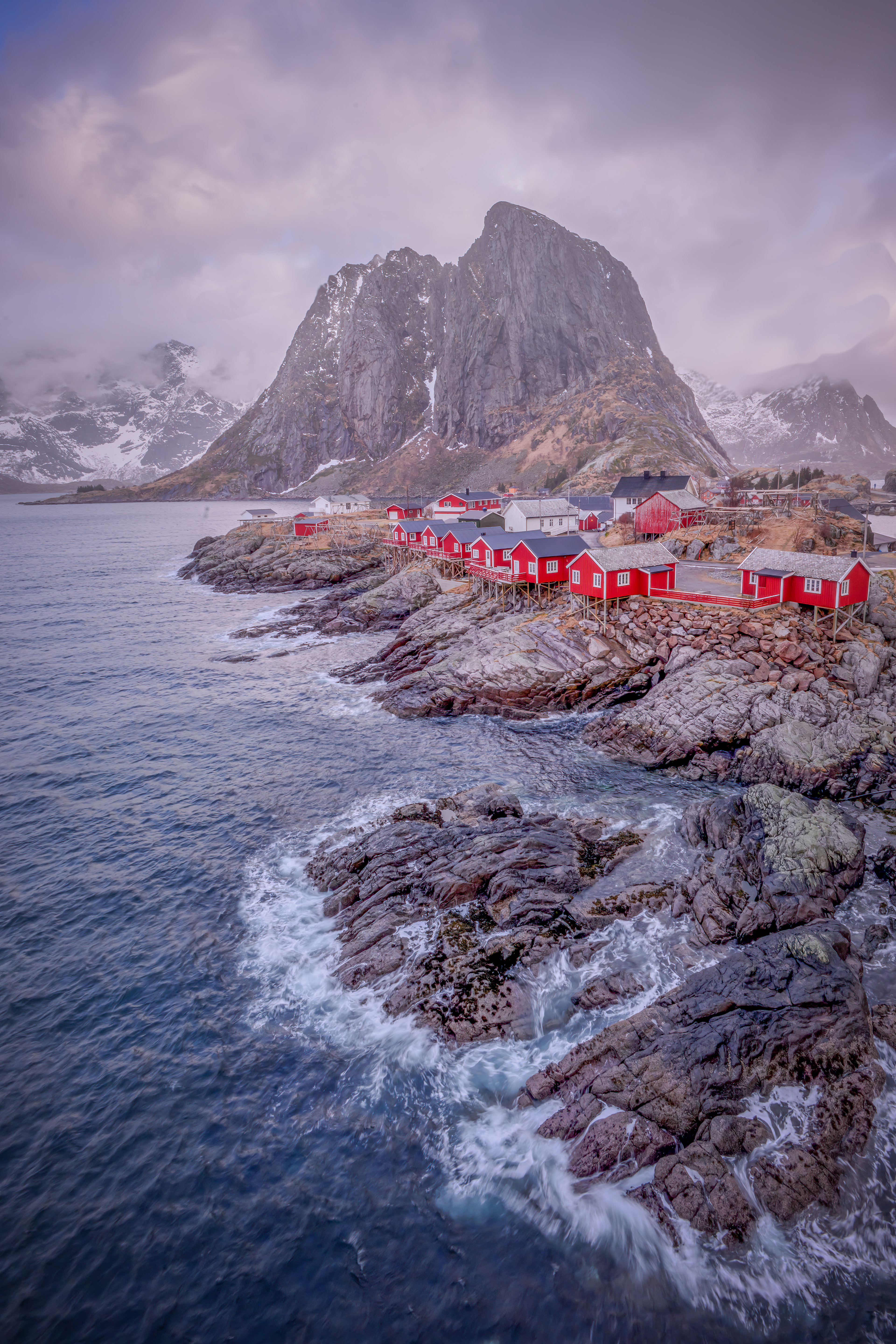
Standing on the Hamnøy Bridge, I photographed the traditional red Rorbuer (fishing cabins) alongside the majestic Festhelltinden Mountain, with waves crashing against the rocks below. This spot offers an incredible view of the stunning scenery—provided the wind isn't howling with gusts exceeding 80 km/h.
___________________________________________
Sakrisøy
Our next stop was the small island and fishing village of Sakrisøy, nestled among rugged mountains. I followed a path along the road, searching for a spot to sit and photograph this magnificent sight. The gusty winds made it difficult to stay here for long. I used a tripod, but the wind gusts even rocked that. I adjusted my camera settings to ensure the photo was clear and not blurry—incredible views.
___________________________________________

This photo offers a different perspective of Sakrisøy, looking from the towering mountain wall to the town below. Reaching this spot was quite challenging because there was no parking available for our bus, so we had to climb a path along the road. The wind was howling, forcing me to hold onto the guardrail both while ascending and descending to avoid being blown off the edge. The steep incline acted like a funnel for the wind. Despite the difficult conditions, the view from the top was outstanding and well worth the effort!

Our group visited the iconic yellow house in Sakrisøy, a traditional fishing cottage nestled in the small town of Moskenes. It's interesting to see how the house can be aligned with the mountain behind it. It's to bad the weather was dreary with clouds. I've seen some spectacular photos with sunlight reflecting off the mountain.
___________________________________________
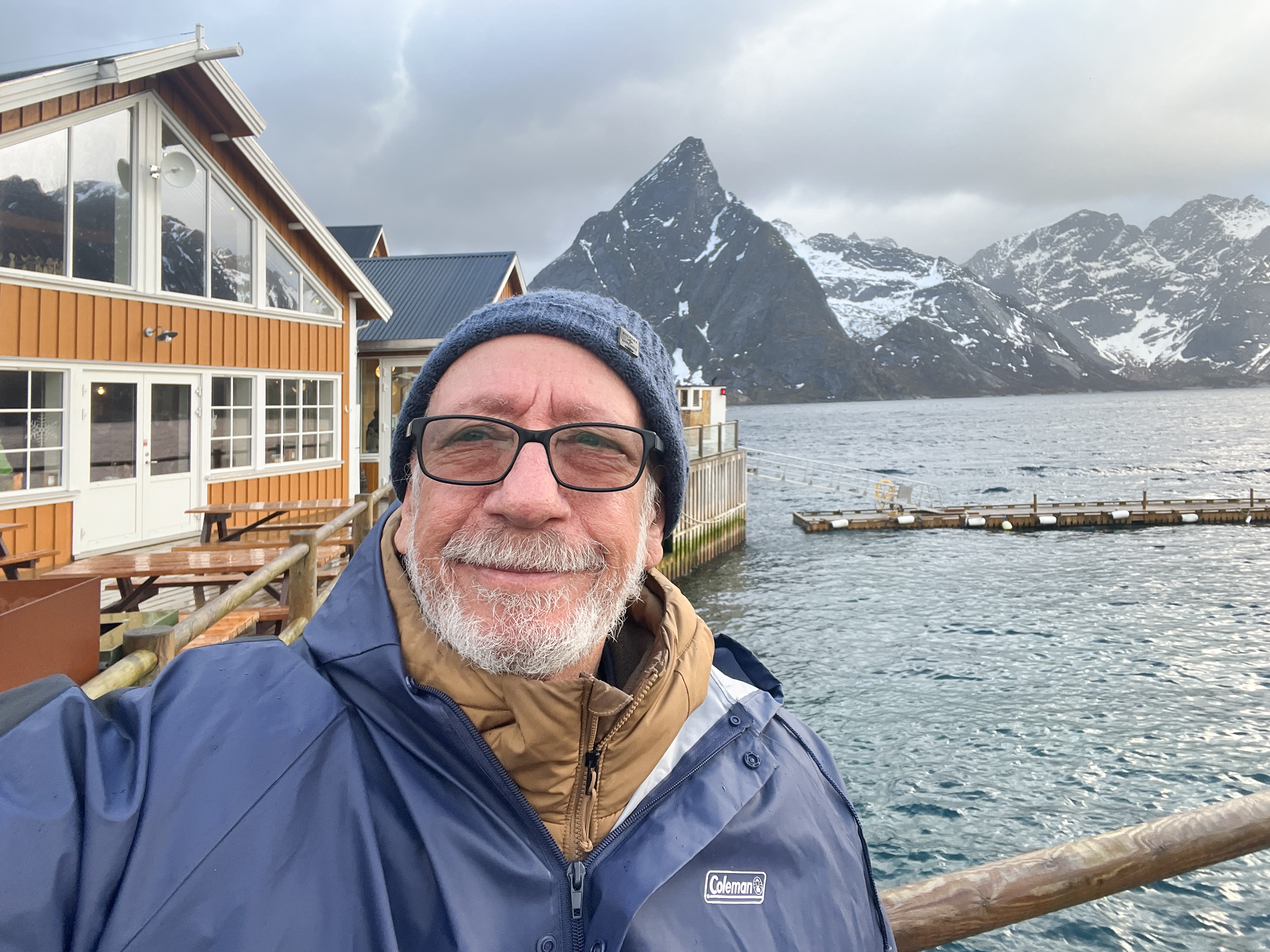
We had to stop at Anita's while in Sakrisøy, and it was packed. The restaurant offered a wonderful seafood menu, as well as sausages and gifts to take home. I ordered a delicious open-faced shrimp sandwich and bought a whale sausage to take home.

When you walk into the restaurant, you're greeted with a pyramid of dried codfish heads, mouths open, stacked in a corner.
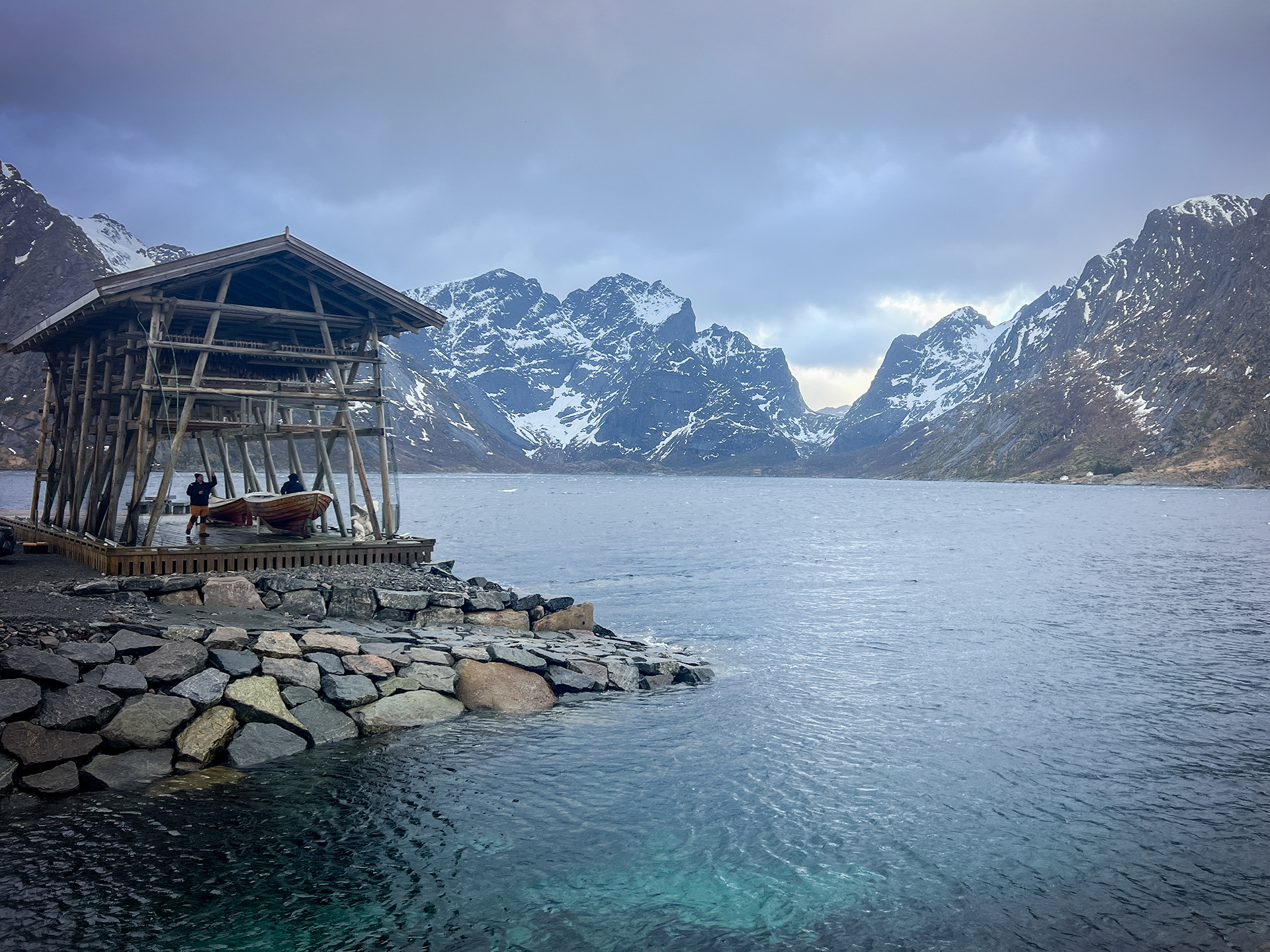
Most fish racks in the Lofoten Islands are simple and open, but this one has a roof to keep the water and birds away. To preserve the fish, they're dried on large racks. There is no need to salt or smoke the fish, as the winter temperatures in Lofoten are just below freezing. While the fish doesn't freeze solid, it also doesn’t rot. Instead, it dries in the sun and wind from late winter until spring. By the end of this process, the fish is completely dry and easy to transport while still retaining its essential nutrients.

Looking up to see fish drying on the racks.
___________________________________________
Uttakleiv Beach
Uttakleiv Beach is one of the most picturesque beaches on the Lofoten Islands. The rocky shoreline on the left side of the beach provides fantastic views for those who appreciate surf and boulders. However, it can be dangerous during the winter due to ice, slippery rocks, and heavy surf. I used ice cleats to navigate the rocks safely and remained on the lookout for sudden waves that could catch me off guard, mainly when I was focused on my camera.
You can find the Dragon's Eye a little further up the beach. This unique formation was created during the last ice age and features a perfectly circular depression in the rock, filled with clear water and a central round stone that resembles a pupil. This natural feature, known as a pothole, was formed by the erosive power of glacial meltwater. The vibrant colors of the surrounding rock create an ideal backdrop for the Dragon's Eye!

The beach with small waves is perfect for long-exposure photography to capture the water's movement among the rocks.

Scouting out the beach.

Crouched for that perfect shot!
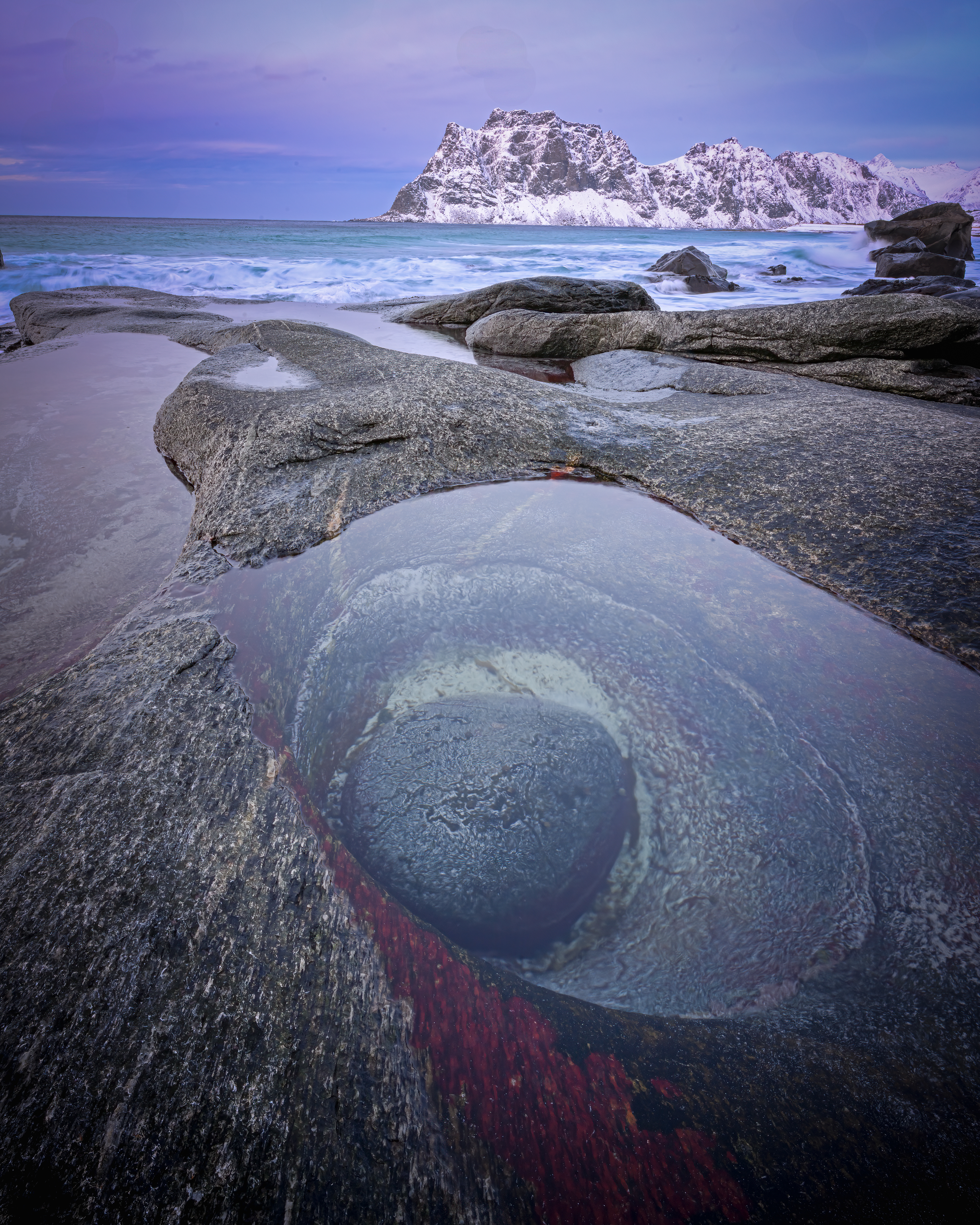
The Dragon's Eye
___________________________________________
Seafood
Seafood— that’s all I ate for a whole week. I had halibut, salmon, fiskesuppe (fish soup), shrimp, and even tried whale. Whale meat is quite plentiful on the Lofoten Islands. It tastes very similar to beef but has a dark, almost black color. Just like steak, I preferred mine medium rare.
Whale hunting is limited to around 1,000 minke whales in Norway, while the wild population is approximately 149,000 in the North Atlantic. Norway, Iceland, and Japan are the only countries that still hunt whales. Overall, the global population of Minke whales is estimated to be over 500,000, making them one of the most abundant whale species.

My cabin mate Jared Forman cooked up this deliious dish for salmon, brocolli and shrimp. Delicious!
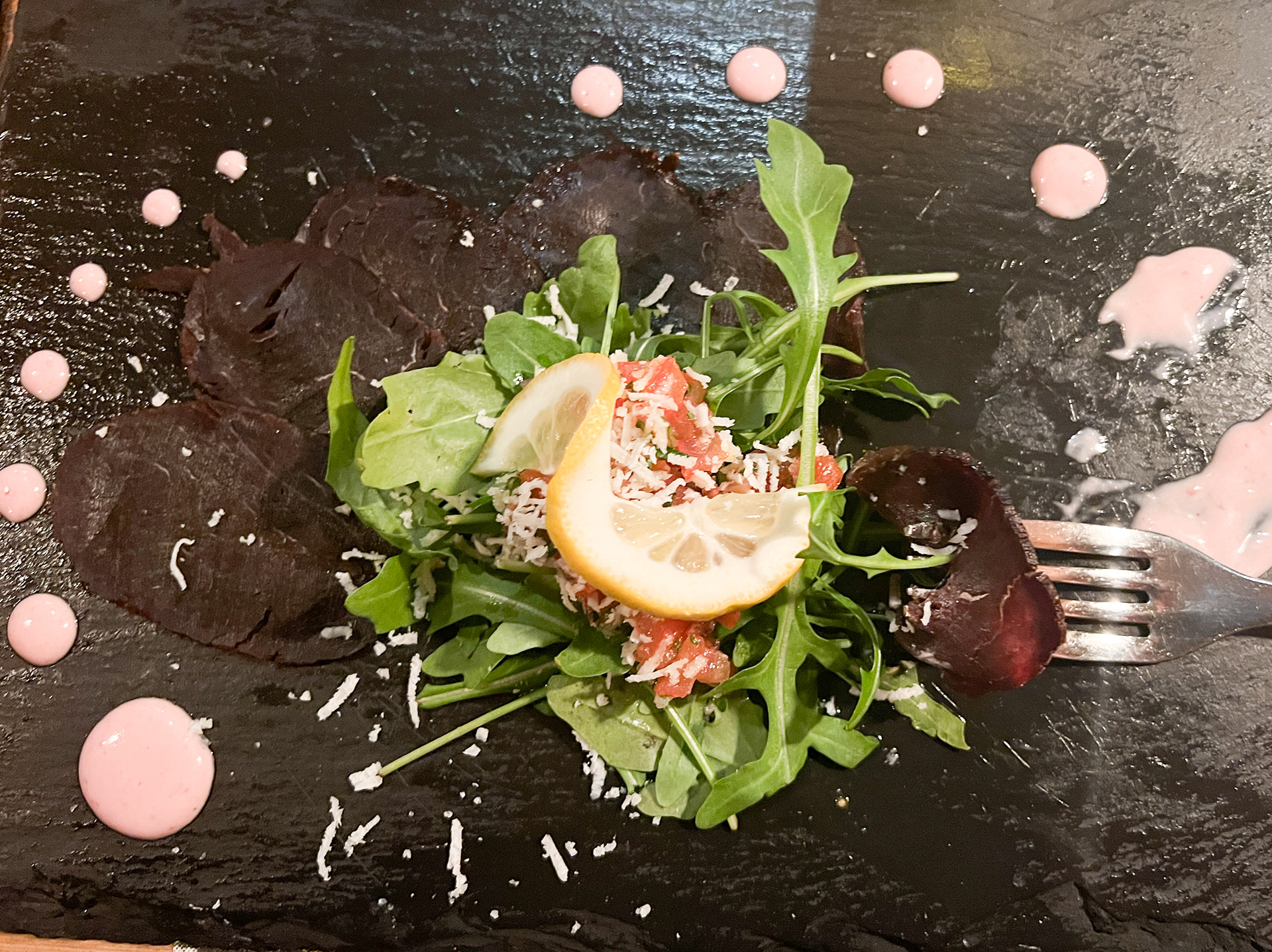
Smoked Whale on a bed of Arugula
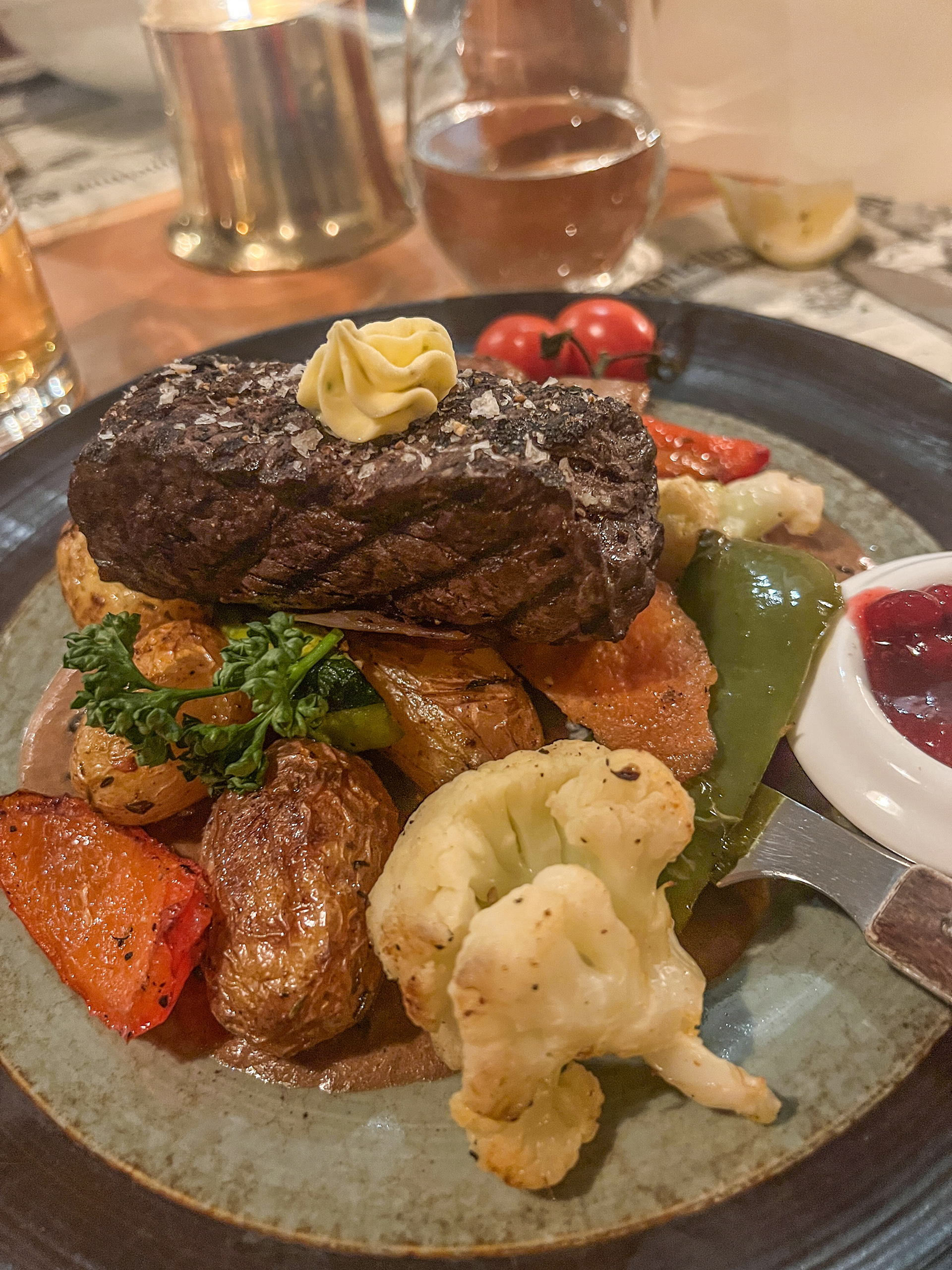
Medium Rare Whale Steak
___________________________________________
Flakstad
Flakstad Kirke is a beautiful little red church with an onion-shaped dome that provides a stunning contrast against the snow and rugged mountains in the small village of Flakstad, Norway. According to Wikipedia: "Flakstad Church was first mentioned in written records in 1430, although it was likely built before that date. The church features a limestone baptismal font that dates back to between 1250 and 1300, suggesting that the church may have been constructed in the second half of the 13th century. The original medieval structure had a timber-framed cruciform design but did not include a tower. This building was destroyed by a storm around 1780. Shortly afterward, a new church was built on approximately the same site, using timber sourced from Russia. One of the chandeliers in the new church also came from Russia. Several items from the old church, including two chandeliers and the altar table, were relocated to the new building. Additionally, the new church features a tower in the central part of the structure, topped with a small onion dome."
___________________________________________
Rambergstranda Beach
The red fishing cabin along Rambergstranda Beach stands out beautifully against the cold, snowy, foggy surroundings. The rorbu (rorbuer plural, or rorbu singular), are a traditional part of Norwegian culture.
The rorbuer cabins of the Lofoten Islands were initially constructed to accommodate visiting fishermen. These cabins were built on stilts in the water and were often shared by multiple fishermen. The term "rorbu" is derived from the Norwegian words "ro" (to row) and "bu" (a small house). The first rorbuer community was built around 900 AD to accommodate the influx of fishermen attracted by reports of abundant fish along the Norwegian coast.
I was surprised to see the turquoise-colored water, as I always thought that shade was typically found in the tropics. The scientific explanation is that the white sand on the beach reflects light, resulting in a bright turquoise appearance.
___________________________________________
Sørvågen Waterfall
I hiked to Sørvågen Waterfall in Norway's Lofoten Islands. It's about a 70-meter climb. So, it's not difficult. It is a stunning location and an ideal spot for capturing a panorama. I stitched together three images to showcase the vastness of the scene.
___________________________________________
Å
The village of Å is one of the shortest names for a town in the world. It is pronounced like the English letter "O" in Norwegian and means "stream." Å is located on the island of Moskenesøya, at the Lofoten archipelago's southern end. The name is from the old Norse word "á," which means "(small) river".
Until the 1990s, it was primarily a fishing village known for its stockfish. Today, the main economic activity in the village is tourism, which is quite fitting for a place with such a unique name.

Å

Å
___________________________________________
Volandstind Mountain
This is the last stop on my journey through the Lofoten Islands. Though there were trails to the top of the mountain, our group stayed along the boggy shore. It's a pretty steep climb to the top. This area is also an excellent spot for drone photography. The bridges from on high are spectacular, and they jump from island to island.

Bogs and ponds create a nice foreground for the impressive Volandstind Mountain and its surrounding peaks. This area is quite squishy to walk through. Just last week, it would have been frozen, and I would have needed cleats to get around.
This is a drone video of Volandstind Mountain and its surrounding peaks and the Fredvang Bridges that connect the islands of Moskenesøya and Flakstadøya. Video courtesy of blackboxguild.
___________________________________________

Jared Forman, best summed up as...what a character!
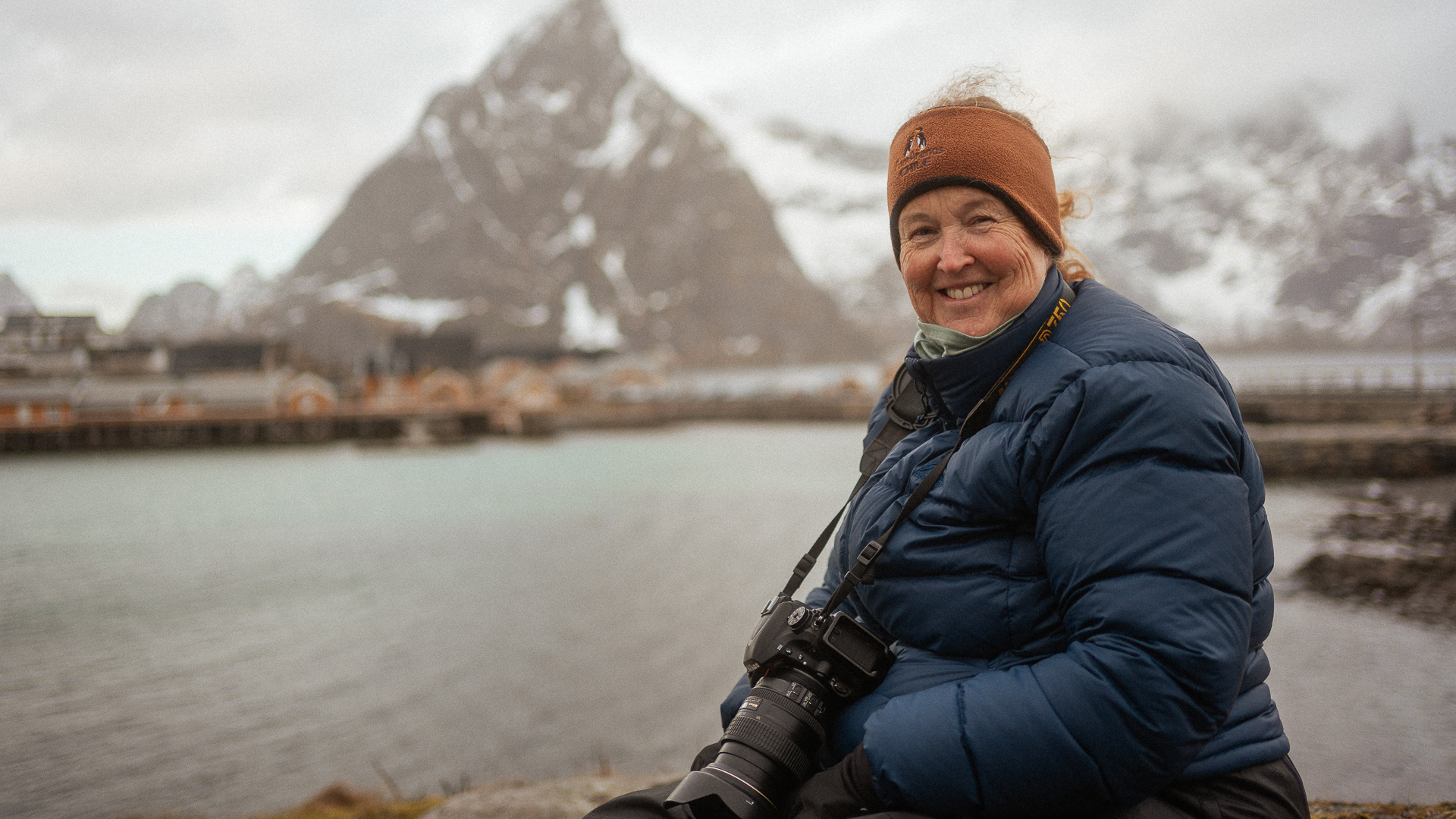
Bronwyn

Mike and cross eyed David, hahaha.

Gayle. I didn't have a photo of her partner Barb but they were a lot of fun.

And of course I had to get a photo of Sylvia, even though she wasn't a cabin mate, though she was a neighbor, lol.. What a sweetheart.
Cabinmates
Our group photo. Jared summed it up nicely..."“They flew in through a storm, and with packs on their backs, they set out to find the light. Along the way, our weary travelers became more than a group of men and women searching for leading lines. They became a family.”
___________________________________________
